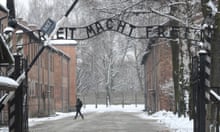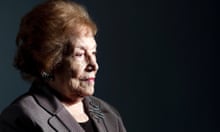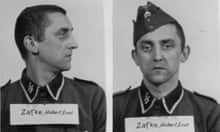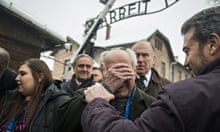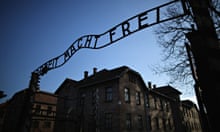On 27 January 1945 Soviet soldiers entered the gates of the Auschwitz concentration camp complex in south-west Poland. The site had been evacuated by the Nazis just days earlier. Thus ended the largest mass murder in a single location in human history.
Precise numbers are still debated, but according to the US Holocaust Memorial Museum, the German SS systematically killed at least 960,000 of the 1.1-1.3 million Jews deported to the camp. Other victims included approximately 74,000 Poles, 21,000 Roma, 15,000 Soviet prisoners of war and at least 10,000 from other nationalities. More people died at Auschwitz than at any other Nazi concentration camp and probably than at any death camp in history.
The Soviet troops found grisly evidence of the horror. About 7,000 starving prisoners were found alive in the camp. Millions of items of clothing that once belonged to men, women and children were discovered along with 6,350kg of human hair. The Auschwitz museum holds more than 100,000 pairs of shoes, 12,000 kitchen utensils, 3,800 suitcases and 350 striped camp garments.
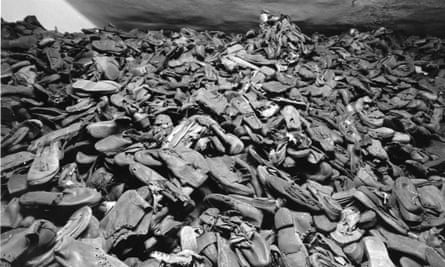
The first Nazi base in Auschwitz, named after the nearby Silesian town of Oświęcim, was set up in May 1940, 37 miles west of Krakow. Now known as Auschwitz I, the site covered 40 square kilometres.
In January 1942, the Nazi party decided to roll out the “Final Solution”. Camps dedicated solely to the extermination of Jews had been created before, but this was formalised by SS Lieutenant General Reinhard Heydrich in a speech at the Wannsee conference. The extermination camp Auschwitz II (or Auschwitz-Birkenau) was opened in the same year.
With its sections separated by barbed-wire fences, Auschwitz II had the largest prisoner population of any of the three main camps. In January 1942, the first chamber using lethal Zyklon B gas was built on the camp. This building was judged inadequate for killing on the scale the Nazis wanted, and four further chambers were built. These were used for systematic genocide right up until November 1944, two months before the camp was liberated.
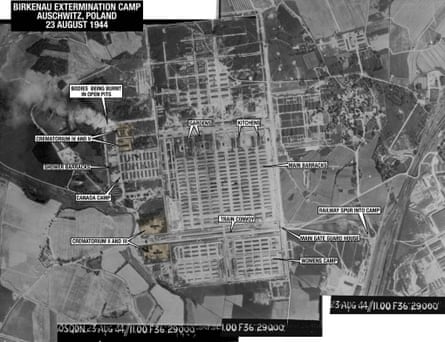
This is not the limit of the horrors of Auschwitz I. It was also the site of disturbing medical experimentation on Jewish and Roma prisoners, including castration, sterilisation and testing how they were affected by contagious diseases. The infamous “Angel of Death”, SS captain Dr Josef Mengele, was one of the physicians practising here. His particular interest was experimenting on twins.
According to the numbers provided by the US Holocaust Memorial Museum, Auschwitz was the site of the most deaths (1.1 million) of any of the six dedicated extermination camps. By these estimates, Auschwitz was the site of at least one out of every six deaths during the Holocaust. The only camp with comparable figures was Treblinka in north-east Poland, where about 850,000 are thought to have died.
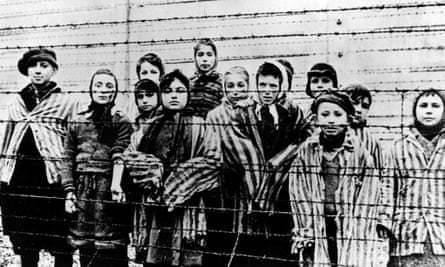
The third camp, Auschwitz III, also called Monowitz, was opened in October 1942. It was predominantly used as a base for imprisoned labourers working for the German chemical company IG Farben. According to the Auschwitz-Birkenau memorial museum, an estimated 10,000 labourers are thought to have died there. Once they were judged incapable of work, most were killed with a phenol injection to the heart.
The SS began to evacuate the camp in mid-January 1945. About 60,000 prisoners were forced to march 30 miles westwards where they could board trains to other concentration camps. The US Holocaust Memorial Museum estimates 15,000 died during the journey, with the Nazis killing anyone who fell behind.
More than 7,000 Nazi personnel are thought to have served at Auschwitz but just a few hundred have been prosecuted for the crimes committed there. The pursuit of justice has not ceased, with German justice officials saying on 2013 that there were 30 surviving Auschwitz officials who should face prosecution.
